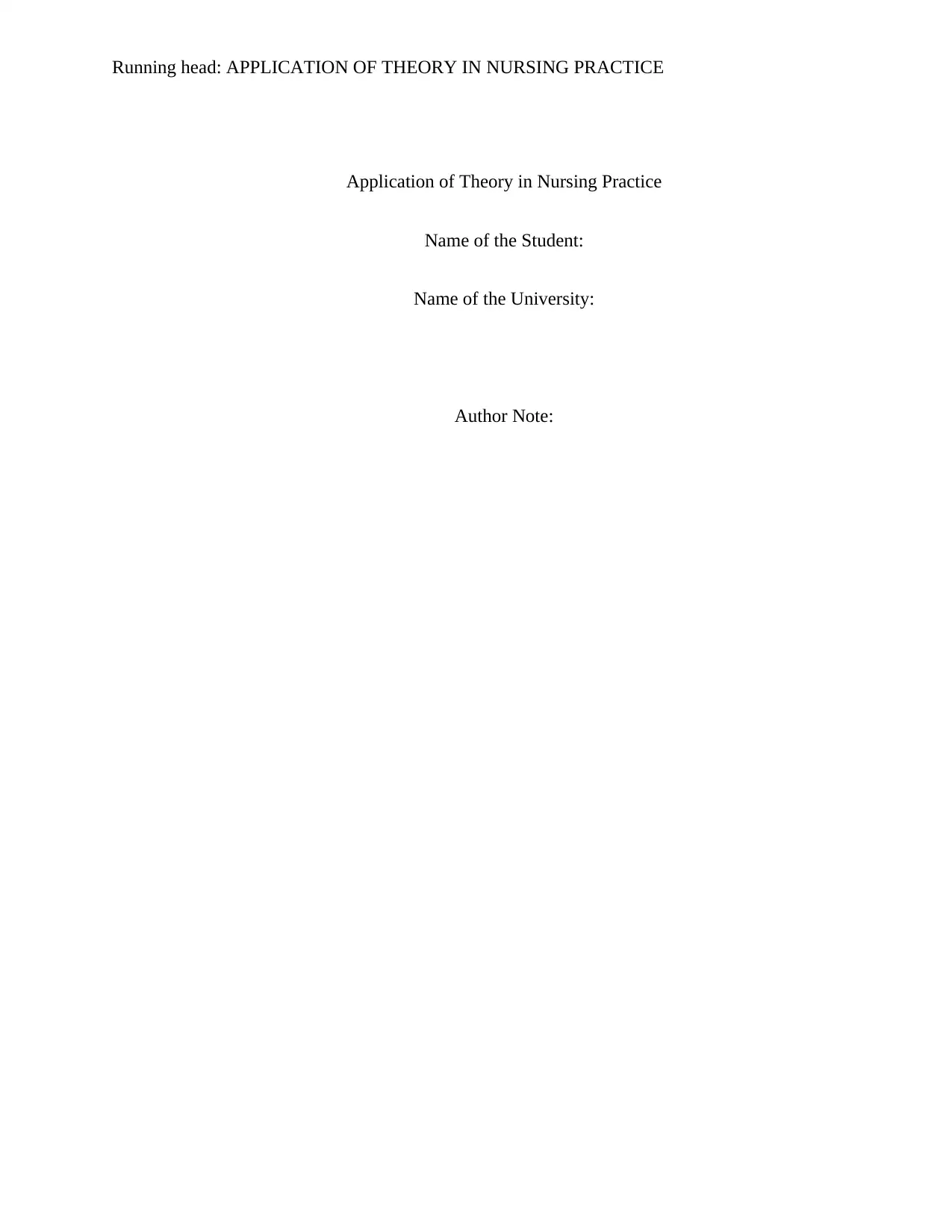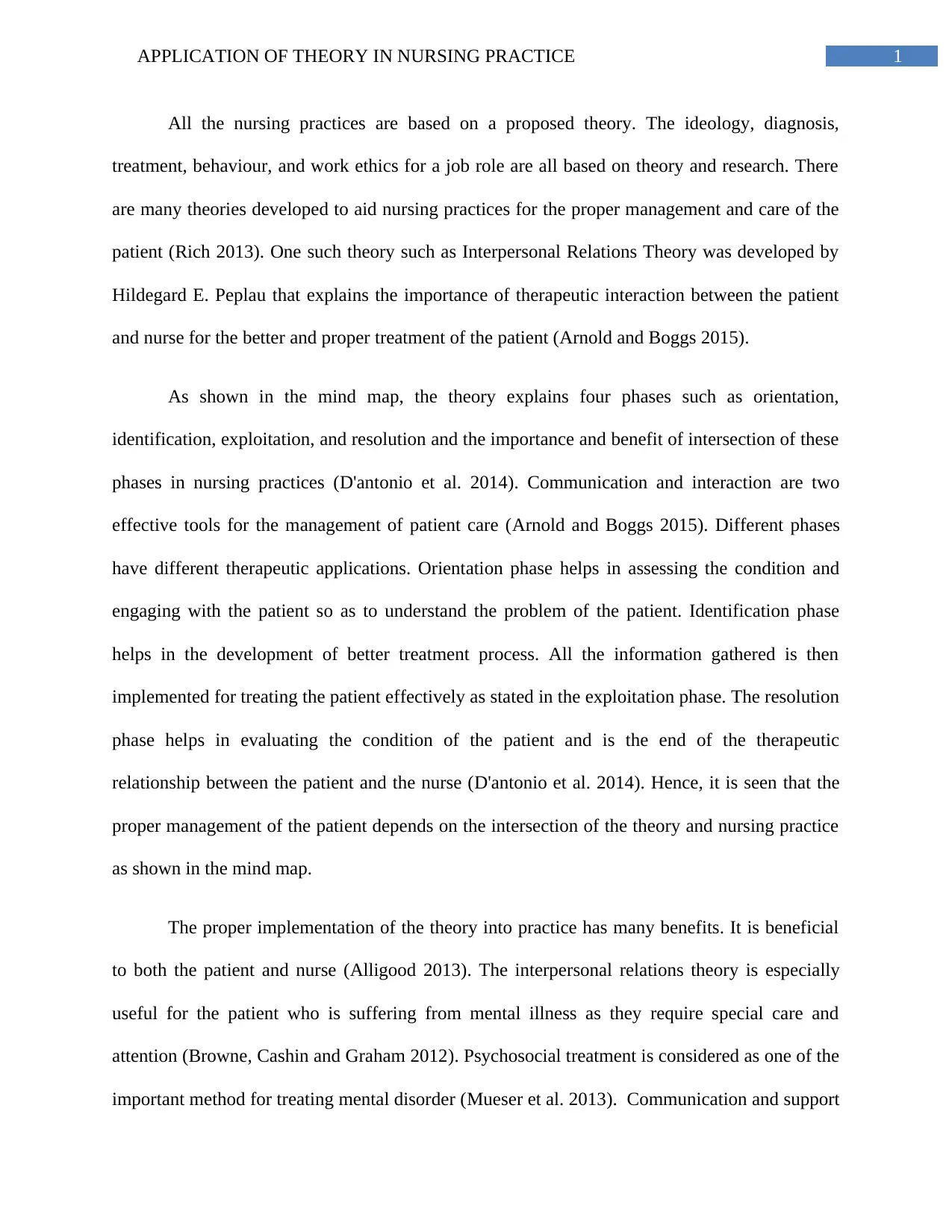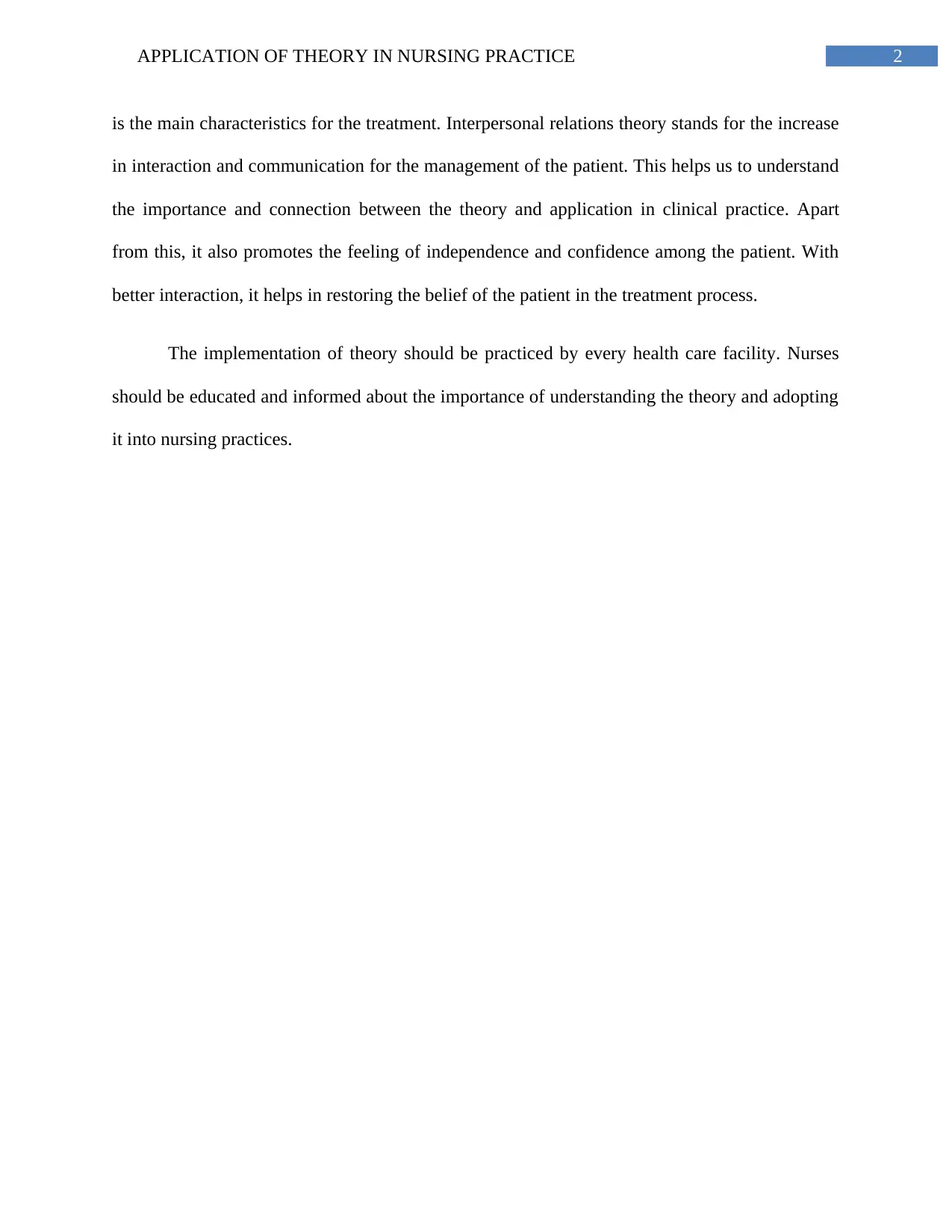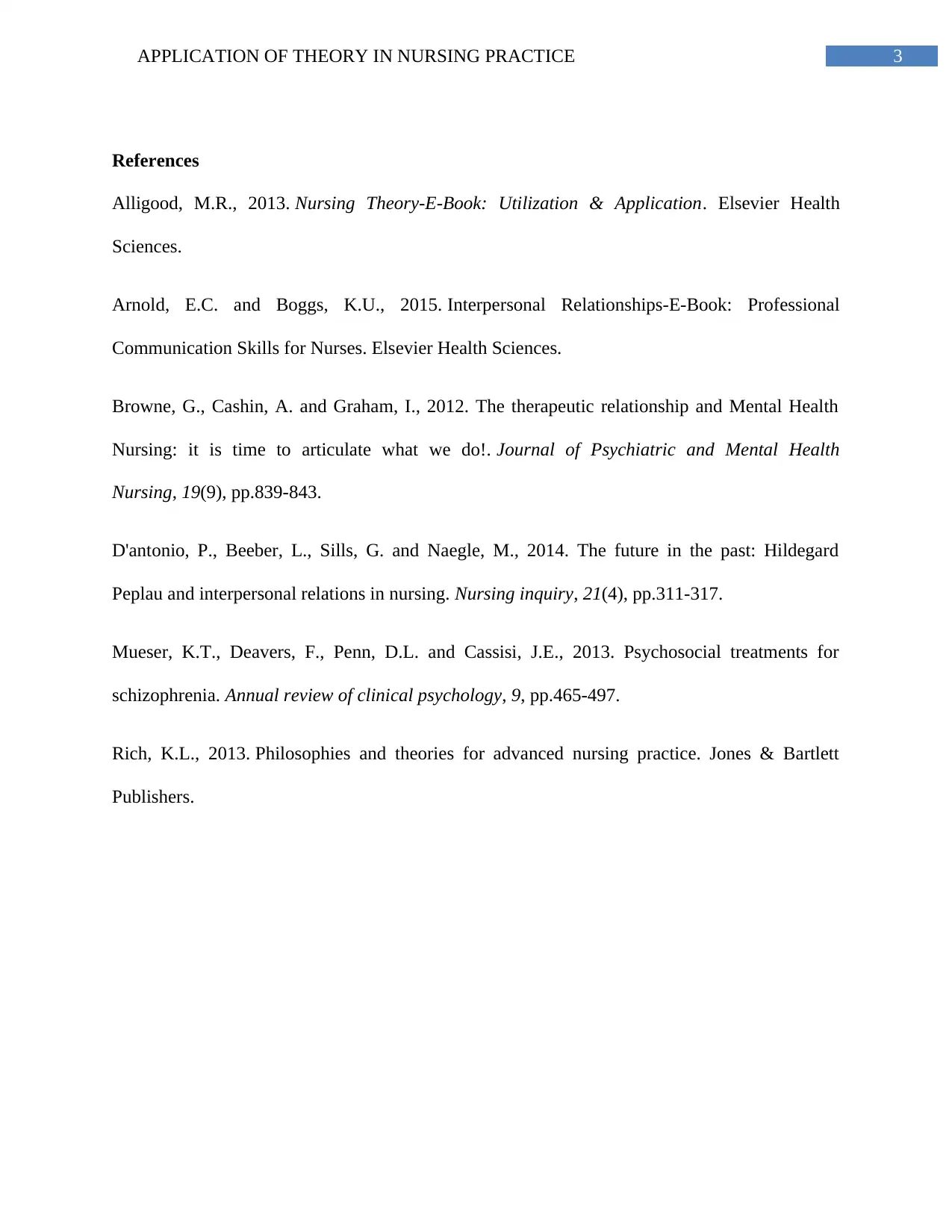Nursing Practice and Theory Application: A Comprehensive Report
VerifiedAdded on 2020/04/01
|4
|698
|75
Report
AI Summary
This report explores the crucial application of theory in nursing practice, emphasizing the Interpersonal Relations Theory developed by Hildegard E. Peplau. It highlights the significance of therapeutic interaction between nurses and patients, detailing the four phases of this theory: orientation, identification, exploitation, and resolution. The report underscores how effective communication and interaction are vital for proper patient management, particularly in mental health care, and promotes patient independence and confidence. The study emphasizes the benefits of integrating theory into practice for both patients and nurses, advocating for healthcare facilities to educate nurses on the importance of theory application. This report is essential for understanding the intersection of nursing theory and its practical implementation in clinical settings.
1 out of 4











![[object Object]](/_next/static/media/star-bottom.7253800d.svg)